There have been some truly amazing Med-tech developments this year, each sounding like they’re right out of Science fiction (Fringe, anyone?!). Here’s a few seriously worth talking about.
Gradually, we too are becoming turning bionic in our attitude to medicine – and due to accessibility of manufacturing platforms, creative innovators like those in the Biohacking Subculture and open source material, some truly futuristic inventions have hit the headlines this year.
Last week we made an infographic on who in the European Biotech industry is working on what in the human body…but what about Bionic organ replacement? Hearts? Skin? Eyes? Pancreas…?
All of these are now tangible inventions in the Biotech field.

Diabetes: Google Lens and Intarcia Implant
The Google Lens consists of a wireless chip and a miniaturized glucose sensor. A tiny pinhole in the lens allows for tear fluid to seep into the sensor to measure blood sugar levels. There is a wireless antenna inside of the contact that is thinner than a human’s hair, which will act as a controller to communicate information to the wireless device.
The lens was created by Brian Otis and Babak Parviz who were both members of the electrical engineering faculty at the University of Washington prior to working in Google’s secret lab, Google[x].
Then there is Intarcia’s insulin implant, which replaces the need by Diabetes type I patients to have daily injections in the ‘FREEDOM’ Trial… Using a simple mechanism, the implant will save patients a lot of hassle and discomfort in this chronic disease and is now awaiting market approval after a successful phase III trial.
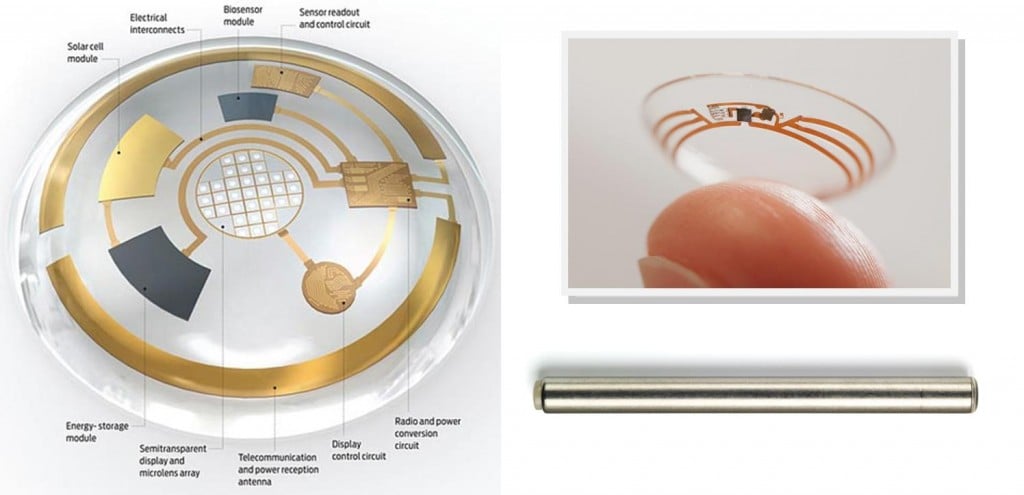
The Bionic Pancreas…
Then there is the option of replacing the entire organ in Diabetes…A research team from the University of Cambridge (UK) has managed to develop a closed loop beta-cell based insulin delivery system for diabetes type I. This bionic pancreas prototype has been constructed for human trials using an iPhone app which monitors blood glucose levels.
A similar research development has been made by Boston’s Bionic Pancreas project which completed its 22-day outpatient trial in April this year. In collaboration with Boston University and Massachusetts General Hospital, the Bionic pancreas has been branded the iLet.
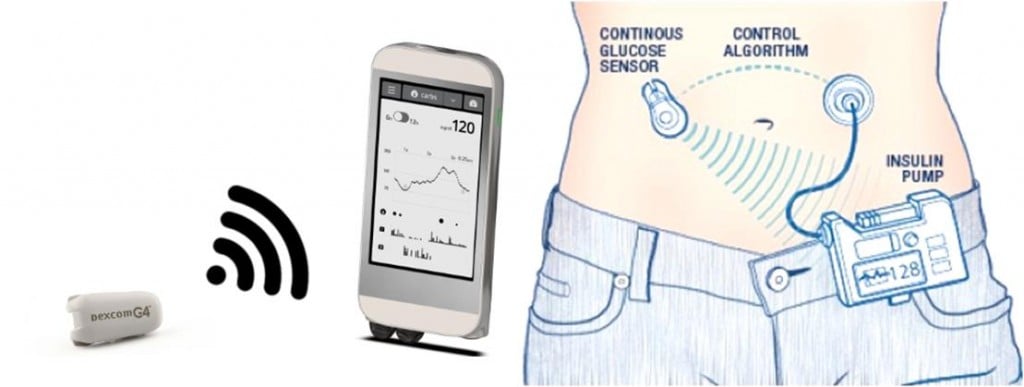
And Replacing Organs Altogether?
We talked a lot about Organs-on-Chips last week and their potential to maybe one day replace the need for animal testing in pre-clinical drug trials. These microchips are considered ‘organs’ because they contain perfused chambers of living cells arranged so that they simulate living tissues and function at the organ level in their physiology.
So far, organs which have been replicated to the 3D microchip level include the Heart, Liver, Lungs, Gut and also Bone Marrow, all made into microfluidic cell culture-devices. Bionic!
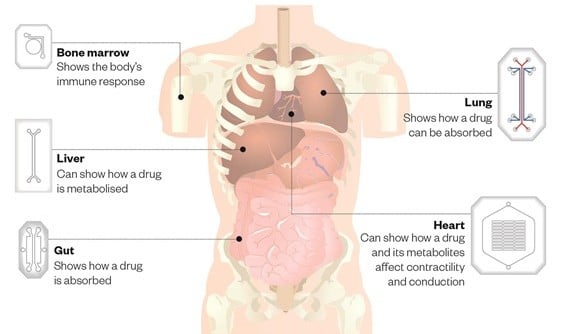
Researchers developing these chips are worldwide, at the Wyss Institute at Harvard University (US), Mimetas in Leiden (NL), inSphero in Schlieren (Switzerland) and Emulate from Cambridge, Massachusetts (US).
Here’s a Video from the Wyss Institute on these Microchip Organs…
Starting With the Heart
Carmat’s Artificial Heart: The first artificial blood pump was invented more than 70 years ago, but for a long time major setbacks have included thromboembolism (clotting) and haemorrhage. One way Carpentier’s group tackles these difficulties is by using bio-prosthetic materials.
It is the first heart using biological tissues which is also intelligent with blood pressure measures, to adapt the heart rate to the body’s needs (simulating hypothalamic control!). Costing approximately €150,000, it is a technological marvel, and so far a total of four patients have received the artificial heart in the latest feasibility study.
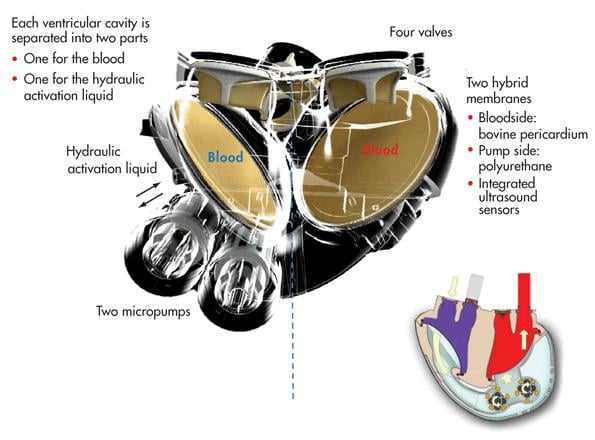
But Bionic Eyes? Surely Not…
France’s Pixium Vision has made The IRIS system which involves an intraocular implant that is surgically placed into the eye and attached to the surface of the retina. The patient wears a pair of spectacles containing an integrated mini-camera and wireless transmitter.
These glasses are connected to a pocket computer, which processes the image captured by the camera into a signal that is transferred back through the glasses and projected onto the retinal implant to stimulate the optic nerve and generate images.
However, Second Sight from the US has gone even further to produce the fully Bionic Eye (read more on the BBC). They have produced the Argus II Retinal Prosthesis System (“Argus II”), the world’s first approved device intended to give back some functional vision for people suffering from blindness.
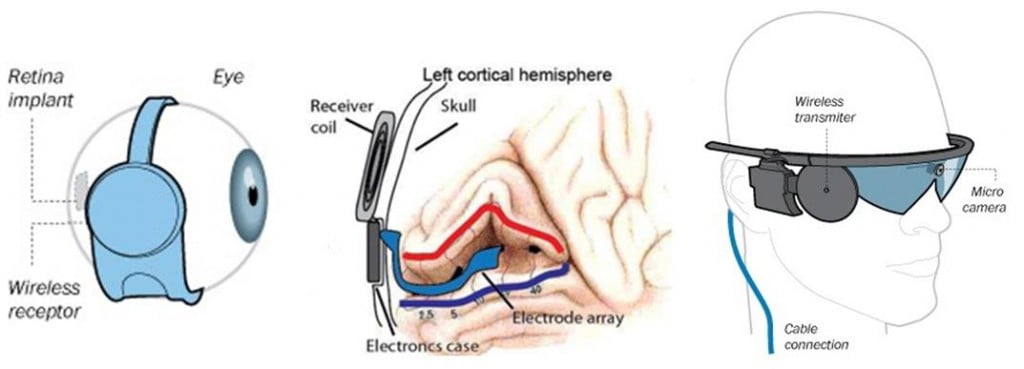
Smart Bone
The biotech IBI in Switzerland has invented artificial bone substitute dubbed SmartBone, an innovative grafting material for bone reconstructive surgery. This mimics human bone, is strong and resistant to shaping, screws and surgical fixation manoeuvres. We interviewed one of the Co-founders of IBI back in April on this medtech invention.
SmartBone is produced by combining natural mineral bone structures with bioactive polymers and cell nutrients – a new concept of biomaterial assembly. This allows the patient’s cells to grow quickly and efficiently into SmartBone while the artificial biopolymers degrade, therefore providing a perfect integration scaffold for bone regrowth.
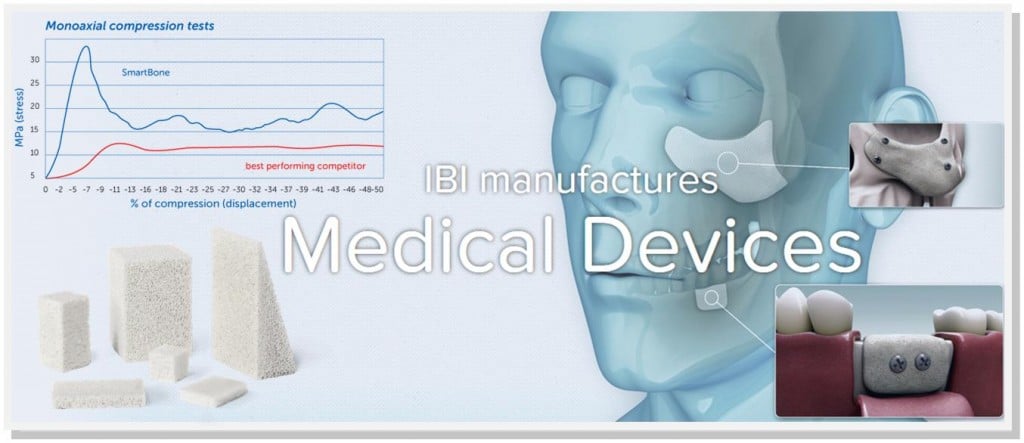
But Replacing whole Limbs? 3D Printed Protheses…
With an estimated 2 million hand-amputees around the world, inventing cheaper, lighter and easier to manufacture prosthetics is a huge area of interest in Medtech.
OpenBionics is one such company which has managed to create a 3D printable hand to be 30 times cheaper than competitors on the market – and printable for use in just under 48 hours!
Abby Taylor and Open Bionics’ mechanical engineer Jonathan Raines created an innovative 3D printed medical splint by combining PLA and Ninja Flex (a thermoplastic elastomer) with two extruders on a desktop 3D printer. They estimate the material cost for the 3D splint to be about €2.75…which is just insane!
What about Skin?
Organovo from the US believes the way forward is bioprinting using printers loaded with biomaterials such as bacteria, undifferentiated cell types and more…Bioprinting enables construction of tissues layer by layer, ensuring that each layer contains the relevant cell types and has dimensions that approximate those of the patients tissue. When multiple cell types are present and organized properly, tissue-specific functions are often enhanced.
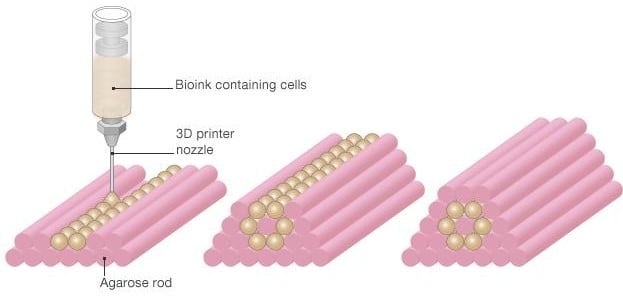
There’s a really cool article by Plugscience on Bioprinting and Organovo, with another application of the technology being mentioned is making skin grafts for burn victims. As James Yoo, a researcher at the Wake Forest Institute for Regenerative Medicine explains, Bipoprinting can be used to directly print grafts onto patient injuries:
By mapping the area, you can determine how many cell layers are needed for the subdermal tissue, as well as the epithelial area. The advantage of the printer is that you can deliver cells more accurately and precisely.“
And from there, bioprinting of whole organs is suddenly possible…Kidneys? Done. Blood vessels? Also already made possible. There’s a video worth watching on DIY Science and the role 3D printers have played in the Biotechnology revolution.
Truly, 3D Printing is transforming science as we know it – making Science fiction real.
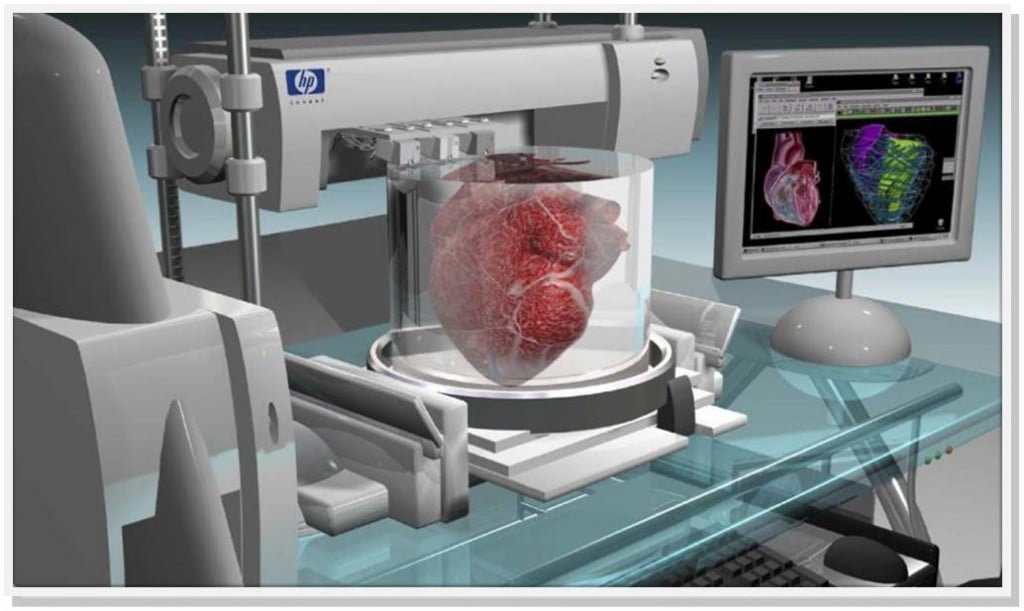
But is all this Feasible Long-term?
So as you can see…researchers from across the world are working towards a bionic body to treat a range of diseases and ‘fix’ a range of incurable conditions. But to what extent are we becoming cyborg? At the Smithsonian’s National Air and Space Museum in Washington (US), there exists a Bionic man, complete with artificial pancreas and heart too…
And now human trials have shown that 3D printing and bionic organs really do have a place in the future of medicine, how will the Industry leverage the cost of such medtech inventions?
With patents, heavy demand and expensive manufacturing processes (in sourcing biological materials), is this avenue in Regenerative medicine really sustainable? And in the time period between now and the future where ‘Cyborgs’ like Neil Harbisson are the norm, how will the Artificial organ business model be adapt for healthcare services like the UK’s NHS?
Perhaps I am overthinking this, and this latest revolution in medicine can be paralleled to that of the rise of automobiles – a slow, yet inevitable paradigm shift in Modern Medicine. What do you think?





